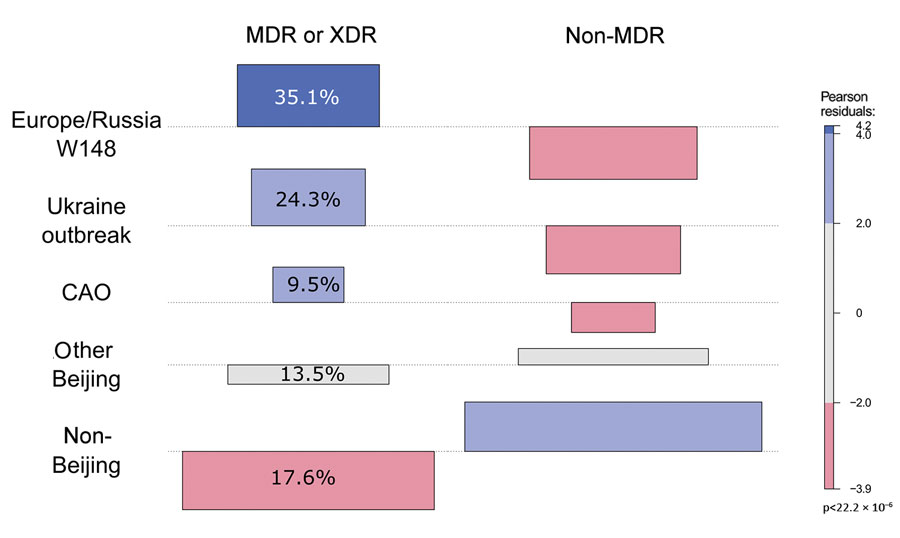Multidrug- and Extensively Drug-Resistant Mycobacterium tuberculosis Beijing Clades, Ukraine, 2015
Matthias Merker

, Elena Nikolaevskaya, Thomas A. Kohl, Barbara Molina-Moya, Olha Pavlovska, Patrik Brännberg, Andrii Dudnyk, Valentyna Stokich, Ivan Barilar, Iryna Marynova, Tetiana Filipova, Cristina Prat, Anders Sjöstedt, Jose Dominguez, Olena Rzhepishevska

, and Stefan Niemann
Author affiliations: Research Center Borstel, Borstel, Germany (M. Merker, T.A. Kohl, I. Barilar, S. Niemann); Odessa Regional TB Hospital, Odessa, Ukraine (E. Nikolaevskaya, O. Pavlovska, V. Stokich); Institut d'Investigació Germans Trias i Pujol, Badalona, Spain (B. Molina-Moya, C. Prat, J. Dominguez); Centro de Investigación Biomédica en Red (CIBERES), Badalona (B. Molina-Moya, C. Prat, J. Dominguez); Universitat Autònoma de Barcelona, Barcelona, Spain (B. Molina-Moya, C. Prat, J. Dominguez); Umeå University, Umea, Sweden (P. Brännberg, A. Sjöstedt, O. Rzhepishevska); National Pirogov Memorial Medical University, Vinnytsia, Ukraine (A. Dudnyk); Odessa I.I. Mechnikov National University, Odessa (I. Marynova, T. Filipova); German Center for Infection Research, Hamburg-Lübeck-Borstel-Riems, Germany (S. Niemann)
Main Article
Figure 3

Figure 3. Association plot comparing expected and observed numbers of MDR/XDR and non-MDR strains from different phylogenetic groups. The colors and bar heights reflect the Pearson residuals, the width of the boxes is proportional to the square root of the expected cell counts, blue squares reflect values that are overrepresented, and red squares reflect values that are underrepresented. Pearson values of +2 represent significant deviation at α = 0.05 level, and values of +4 represent significant deviation at α = 0.001 level. For example, there are more MDR/XDR TB strains in the Europe/Russia W148 clade (35.1% of all MDR/XDR strains) than expected under the hypothesis of independence. CAO, Central Asian outbreak; MDR, multidrug resistant; XDR, extensively drug-resistant.
Main Article
Page created: February 20, 2020
Page updated: February 20, 2020
Page reviewed: February 20, 2020
The conclusions, findings, and opinions expressed by authors contributing to this journal do not necessarily reflect the official position of the U.S. Department of Health and Human Services, the Public Health Service, the Centers for Disease Control and Prevention, or the authors' affiliated institutions. Use of trade names is for identification only and does not imply endorsement by any of the groups named above.
